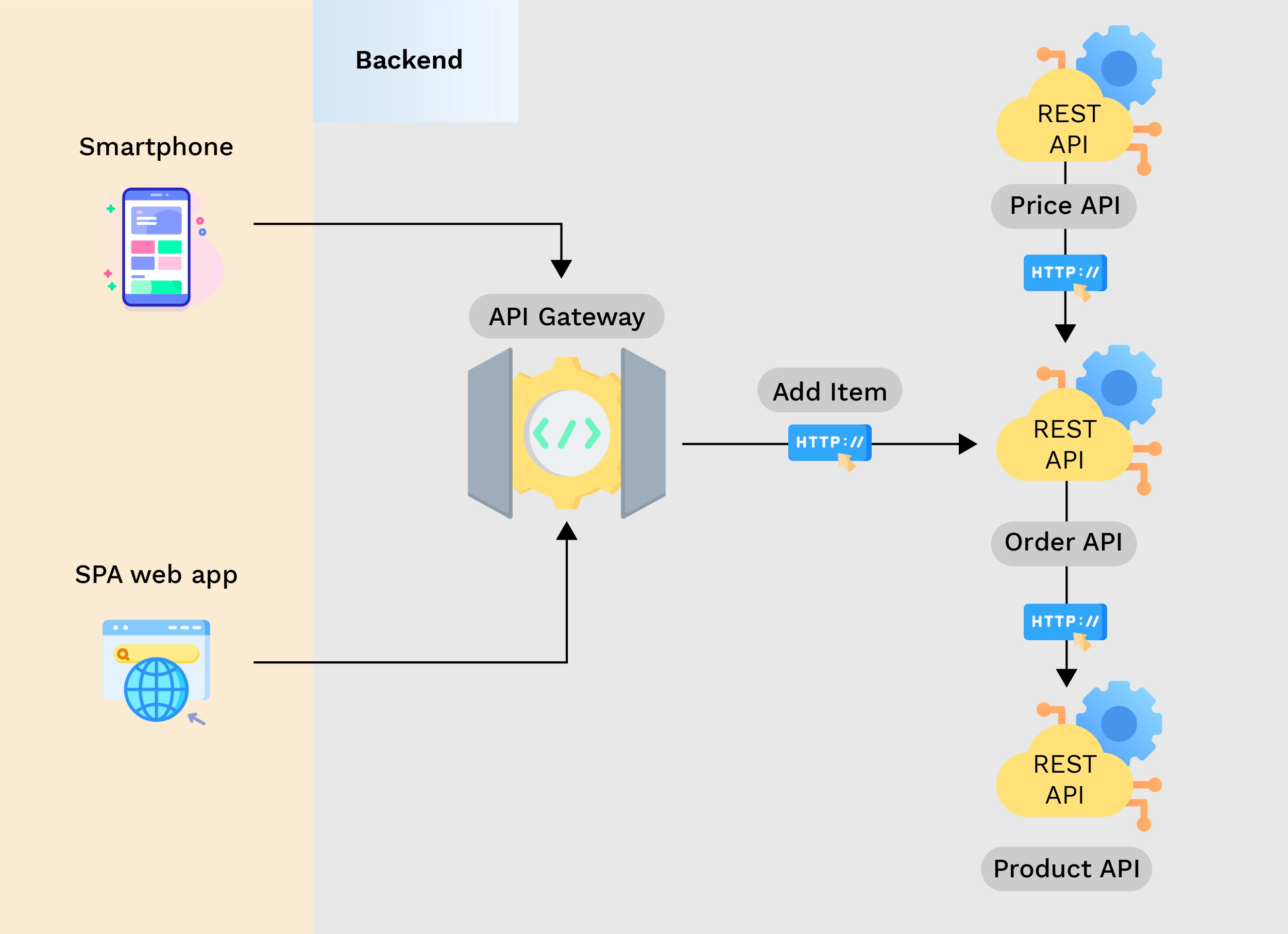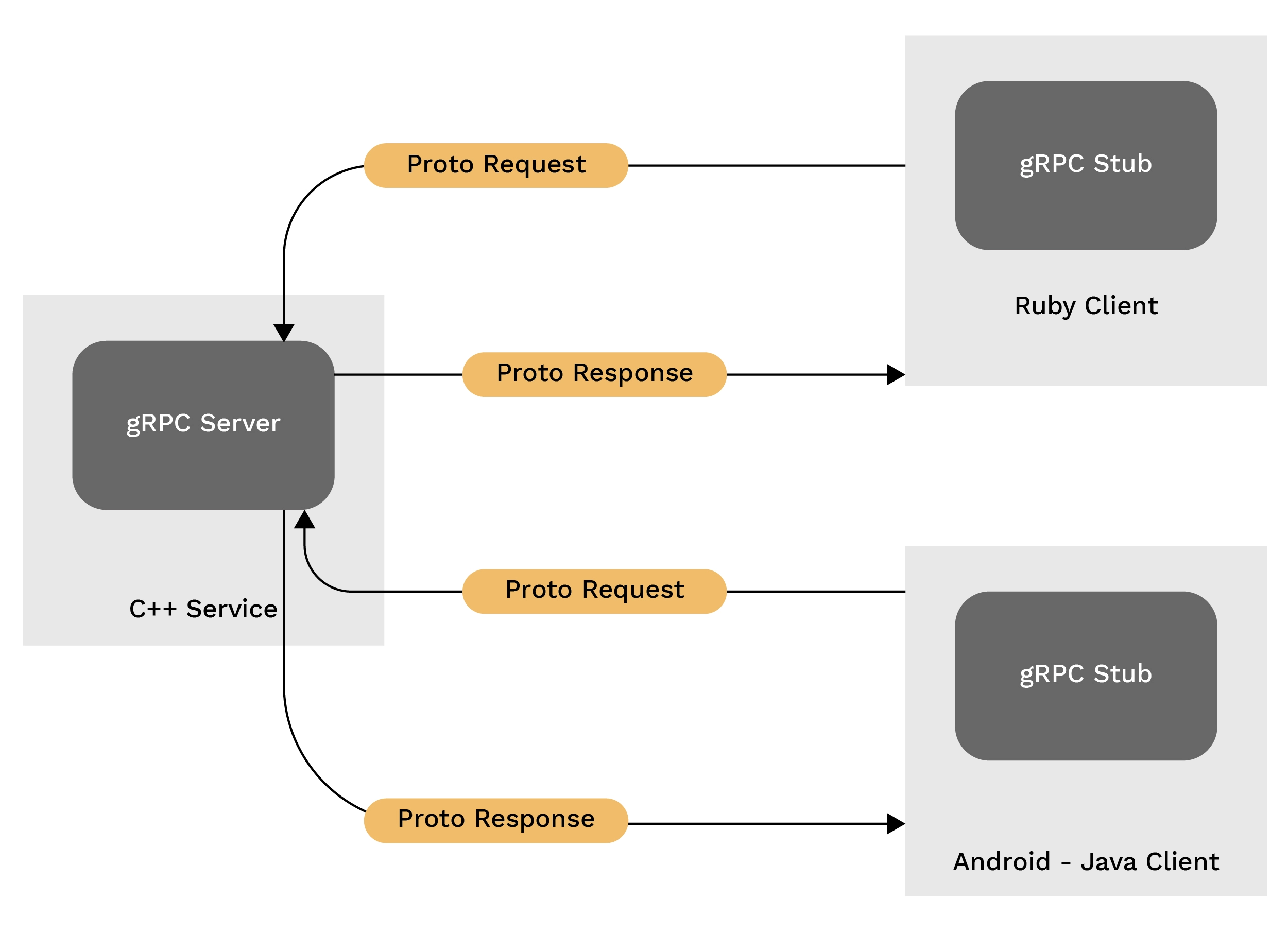HISTORY
Throughout history, communication methods have evolved from using pigeons for messages in the Middle Ages to relying on letters in more recent times. These methods were time-consuming and limited in message size. Today, communication has progressed to faster, more versatile tools like mobile phones, the internet, and email. In the digital world, evolution is key. Just as species adapt to survive, digital technologies constantly evolve to meet new challenges and opportunities. Charles Darwin’s principles of adaptation and survival, once applied to biology, are equally relevant in software development.
The Rise of Microservice and the Fall of Monolithic
Monolithic architectures were once the standard in software development, providing a comprehensive approach. As with any evolutionary process, the advantages of monolithic structures eventually turned into its drawbacks. Think of it like a game of Jenga – pull out one piece, and the whole tower tumbles down. Managing monolithic applications turned into a nightmare, particularly during surges in user activity or resource demands.
In 2007, as online streaming became more popular, a pioneering company broke new ground by challenging the traditional monolithic structures. Confronted with the challenge of stabilizing its system amid a sudden surge in audience numbers, this company made a strategic choice. Instead of continuing with the cumbersome monolithic approach, the company chose to make an innovative transition to microservices. This pivotal decision marked the start of a globally recognized success story – Netflix, Inc. The success of Netflix underscores the potential advantages of adopting microservices. A thorough comprehension of organizational requirements and a commitment to overcoming challenges should guide any transition in architecture.
What is microservices architecture?
Microservices architecture is a software development approach where an application is built from multiple small, independent, and loosely connected services, each dedicated to a specific business function. Rather than creating a monolithic application with all functionalities tightly integrated into one codebase, microservices divide the application into smaller, more manageable components.
Here are some key characteristics of microservices architecture:
Modularity: Microservices are organized around business capabilities, with each service accountable for a specific application use. This modular design facilitates simpler development, maintenance, and scaling of individual services.
Autonomy: Each microservice operates independently and can be developed, deployed, and scaled independently of other services. This helps the development team to work collaboratively, without disrupting other services.
Decentralization: Microservices architecture decentralizes decision-making and control, with each service team empowered to choose the most suitable technologies, tools, and development practices for their specific requirements.
Service Encapsulation: Each microservice encapsulates its data and functionality, exposing well-defined APIs for communication to other services. This encapsulation promotes loose coupling between services, allowing them to evolve independently.
Independent Deployment: Without impacting features of other services, microservices can be integrated and published separately. This enables continuous delivery and deployment practices with new features and fixes being delivered to production quickly and safely.
Size Consideration: While there is no strict definition of the size of a microservice, it is recommended to keep each service small and focused on a single responsibility. This ensures that services remain manageable and easy to understand, reducing complexity and maintenance overhead.
Overall, microservices architecture nurtures scalability, agility, and resilience in software development, making it ideal for modern, cloud-native applications that require rapid iteration and scalability.
Microservices inter-process communication
In this blog, we’ll delve into one of the challenges of microservices: The communication between different microservices, known as interservice communication.
Interservice communication between microservices is a critical aspect of microservices architecture. Following are various common methods of communication between microservices:
Synchronous Communication: In synchronous communication, a microservice sends a request to another microservice and waits for a response before continuing. This can be achieved through RESTful APIs over HTTP or using technologies like gRPC that offer more efficient binary serialization and RPC (Remote Procedure Call) mechanisms.
Asynchronous Communication: Asynchronous communication involves one microservice sending a message to another microservice without waiting for an immediate response. This approach is often used for decoupling services and enabling better scalability and fault tolerance. Message brokers like Apache Kafka, RabbitMQ, or cloud-based services such as AWS SQS (Simple Queue Service) and Azure Service Bus are commonly used for asynchronous communication.
Event-Driven Communication: In event-driven communication, microservices communicate through events that represent state changes or significant occurrences in the system. Events can be published to an event bus or message broker and consumed by interested microservices. This approach enables loose coupling and real-time processing of events. Technologies like Apache Kafka, AWS Kinesis, NATS (NATS.io), or MQTT are often used for event-driven architectures. Among these, MQTT is extensively used in IoT applications.
Each approach has its advantages and considerations, and the choice depends on factors like the nature of the application, performance requirements, scalability needs, and team expertise. Often, a composition of these approaches is used within a microservices architecture to address different communication scenarios and needs.
This article will explore the REST, gRPC, and MQTT technologies.
REST
Interservice communication via REST (Representational State Transfer) is a widely used approach in microservices architecture. REST is an architectural style that uses HTTP requests to access and manipulate resources, typically using standard HTTP methods like GET, POST, PUT, and DELETE.
In this approach, each microservice exhibits its functionality through a set of RESTful APIs. Other microservices can then interact with these APIs to access or modify data and perform various tasks. This decoupled nature allows for flexibility and scalability in building and managing microservices-based systems.
Here are a few diagrams illustrating interservice communication via REST in a microservices architecture:

In this diagram:
- The Gateway acts as an entry point for external requests
- The Gateway forwards requests to Order Microservices
- Order Microservice initiates an HTTP request to Price Microservice and Product Microservice
- These communications between Microservices are done via RESTful HTTP requests
- Each arrow represents a RESTful HTTP request/response interaction
This diagram illustrates the flow of RESTful interservice communication within a microservices architecture, highlighting the interactions between different services.
However, interservice communication via REST has some considerations and challenges. These may include:
Latency: Since RESTful communication typically occurs over HTTP, network overhead and processing time can introduce latency.
Complexity: Interactions of multiple RESTful APIs and managing them even when the number of microservice grows. The complexity may increase with authentication, authorization, error handling, and versioning of APIs.
Overfetching and Underfetching: RESTful APIs may return more data than necessary (overfetching) or not enough data (underfetching), leading to inefficient data transfer and processing.
Statelessness: RESTful communication is stateless, where the client sends a request to the server via HTTP to perform an action or retrieve data. While this simplifies scalability and fault tolerance, it may require additional effort to manage session state or complex workflows.
API Versioning: As microservices evolve independently, maintaining backward compatibility and managing API versioning becomes crucial to ensure smooth communication between services.
Despite these challenges, REST remains a popular choice for interservice communication in microservices architectures due to its simplicity, scalability, and widespread adoption. However, other communication protocols and patterns, such as GraphQL, gRPC, and event-driven architectures, are also used depending on specific requirements and use cases.
gRPC
gRPC stands for Google Remote Procedure Call, and it is a modern, high-performance framework developed by Google. It facilitates efficient and reliable communication between microservices in distributed systems. Here’s an overview of how gRPC enables interservice communication:
In gRPC, client applications can directly call methods on a distributed server application on a different machine as if they were local methods. This capability is one of the key features of gRPC and is enabled by the RPC (Remote Procedure Call) protocol.

In this diagram:
gRPC clients and servers can operate and communicate in various environments, from Google’s internal servers to your personal desktop, and can be developed in any of the languages supported by gRPC. For instance, you can effortlessly set up a gRPC server in Java and have clients in Go, Python, or Ruby. Moreover, the latest Google APIs include gRPC versions of their interfaces, allowing seamless integration of Google functionality into your applications.
These diagrams provide a visual representation of how gRPC facilitates interservice communication within a microservices architecture, emphasizing the interaction between different services using the gRPC protocol. Should you migrate all your APIs to gRPC?
Probably not!
Before deciding, let’s consider some key facts about APIs.
gRPC is commonly used for interservice communication within microservices architectures, especially for private APIs. However, there are trade-offs to consider, particularly when introducing a new technology stack like gRPC.
Using gRPC for private APIs offers benefits such as improved performance, efficiency, and type safety compared to traditional REST APIs. It also facilitates communication between microservices using protocol buffers, enabling better language interoperability and versioning.
IDL: IDL (Interface Definition Language) is used by gRPC with Protocol Buffers (Protobuf) to define service interfaces. It allows you to define the structure of your service interfaces and the messages exchanged between microservices in a language-agnostic way.
HTTP/2: gRPC is based on HTTP/2, a binary protocol designed to improve communication efficiency. It has features like multiplexing, header compression, and server push. This makes gRPC efficient in terms of network utilization and reduces latency compared to traditional HTTP/1.x communication.
Bi-directional Streaming: gRPC supports ultiple types of RPC methods, including unary, server streaming, client streaming, and bidirectional streaming. So, developers can choose appropriate communication patterns for the product use case.
Automatic Code Generation: With Protobuf and gRPC, you define your service interfaces and message types in a .proto file. gRPC then automatically generates client and server code in multiple programming languages (e.g., Java, C++, Python, Go) based on this file. This significantly streamlines the development process and guarantees type safety and consistency across microservices.
Interoperability: gRPC supports interoperability between different programming languages and platforms. This means that microservices written in various languages can smoothly communicate with each other using gRPC, enabling polyglot microservices architectures.
Load Balancing and Service Discovery: gRPC integrates with service discovery and load balancing solutions, such as Kubernetes, Consul, and Envoy, to dynamically discover and load balance requests across instances of microservices.
Overall, gRPC is well-suited for building efficient and scalable microservices architectures, particularly in scenarios where low latency, high throughput, and type safety are essential requirements. It offers a modern alternative to traditional RESTful communication and is increasingly adopted by organizations for interservice communication in distributed systems.
MQTT
Interservice communication using MQTT (Message Queuing Telemetry Transport) is another approach commonly used in microservices architectures, particularly in IoT (Internet of Things) applications and scenarios where lightweight messaging is required. MQTT is a publish-subscribe messaging protocol that operates over TCP/IP and is designed for constrained devices and unreliable networks. Let’s learn more about how MQTT facilitates interservice communication between microservices.
Here’s a simplified diagram illustrating how MQTT can be used in a microservices architecture:

In this diagram:
Microservice: Represents individual microservices within the system. Each microservice is accountable for particular functionalities or business logic.
MQTT Broker: Acts as a central message broker or middleware responsible for routing messages between microservices. It facilitates communication between microservices using the MQTT protocol.
Communication Flow: Microservices communicate with each other by publishing and subscribing to topics on the MQTT broker. When a microservice publishes a message to a topic, the MQTT broker delivers the message to all subscribed microservices interested in that topic.
- This diagram illustrates how MQTT can be integrated into a microservices architecture to enable asynchronous and scalable communication between services. MQTT’s lightweight and efficient messaging protocol makes it ideal for IoT and real-time applications, where low latency and minimal resource usage are crucial.
However, interservice communication via MQTT has some considerations and challenges. These may include:
Publish-Subscribe Model: In MQTT, communication occurs through a publish-subscribe model. Microservices can act as publishers, sending messages (called “topics”) to a central broker, and as subscribers, receiving messages from the broker. This decouples the producers and consumers of data, enabling loose coupling and scalability.
Broker-based Architecture: The MQTT broker serves as a central negotiator for routing messages between publishers and subscribers. It manages topics, subscriptions, and message delivery, ensuring reliable communication between microservices.
Quality of Service (QoS): MQTT supports different levels of Quality of Service, ranging from QoS 0 (at most once delivery) to QoS 2 (exactly once delivery), allowing developers to balance message delivery guarantees and network overhead.
Lightweight Protocol: It is crafted to be lightweight and efficient, tailored for less resource devices and slow connections. It uses a binary encoding format for messages, minimizing message size and reducing network overhead.
Persistent Sessions and Retained Messages: MQTT supports persistent sessions, allowing subscribers to receive messages published while they were offline. It also supports retained messages, where the broker stores the last message published on a topic and delivers it to new subscribers.
Security Features: MQTT provides built-in security features like TLS encryption and authentication mechanisms, ensuring secure communication between microservices and protecting against unauthorized access.
Scalability and Reliability: MQTT brokers can be scaled horizontally to handle huge volumes of messages and ensure high availability. They support features like clustering and load balancing to distribute message processing efficiently.
Overall, MQTT offers a lightweight, efficient, and scalable solution for interservice communication in microservices architectures, particularly in scenarios where low latency, high throughput, and reliability are essential, such as IoT applications and real-time data processing systems.
CONCLUSION:
Here is a comparison of gRPC, REST, and MQTT across various parameters:
Communication Protocol:
gRPC: gRPC is based on Remote Procedure Call (RPC) protocol and uses HTTP/2 for transport.
REST: REST (Representational State Transfer) uses HTTP/1.1 or HTTP/2 for communication.
MQTT: MQTT is lightweight messaging protocol crafted for devices with limited processing, less storage capabilities, and limited data speed network.
Payload Format:
gRPC: Can be used to serialize structured data by using Protocol Buffers (Protobuf).
REST: Can use various payload formats such as JSON, XML, or others.
MQTT: Payloads are typically binary or text-based and can contain any data format.
Service Definition:
gRPC: Services and message types are defined using Protocol Buffers language in a .proto file.
REST: Services and resource endpoints are defined using URIs and HTTP methods.
MQTT: Topics define the communication channels, and messages are published and subscribed to topics dynamically.
Error Handling:
gRPC: Specifies a comprehensive range of status codes and error handling mechanisms.
REST: Error handling is through the HTTP status codes and message in the response payload.
MQTT: Error handling is application-specific and may involve custom error codes or patterns.
Performance:
gRPC: gRPC is high performing compared to REST due to HTTP/2 and effective binary serialization features.
REST: May have higher overhead due to textual payload formats like JSON and limitations of HTTP/1.1.
MQTT: Designed for low bandwidth and high-latency networks, making it lightweight and efficient for IoT and real-time applications.
Streaming Support:
gRPC: Supports both unary and streaming RPCs, including client-streaming, server-streaming, and bidirectional streaming.
REST: Supports streaming through techniques like HTTP Chunked Transfer Encoding but may not be as efficient as gRPC streaming.
MQTT: Supports both one-to-many and many-to-one messaging patterns through publish-subscribe.
Language Interoperability:
gRPC: Provides language-neutral communication using Protocol Buffers, enabling clients and servers written in various languages to communicate smoothly.
REST: Language-agnostic but relies on standard HTTP communication.
MQTT: Language-agnostic and supports interoperability between devices and platforms.
Use Cases:
gRPC: Suitable for internal microservices communication, especially in cloud-native environments.
REST: Widely used for client-server communication in web and mobile applications.
MQTT: Ideal for IoT applications, real-time messaging, and telemetry data exchange.
The choice between gRPC, REST, and MQTT depends on factors like performance requirements, payload format preferences, use case suitability, and existing infrastructure considerations.
Know More: Cloud Services












